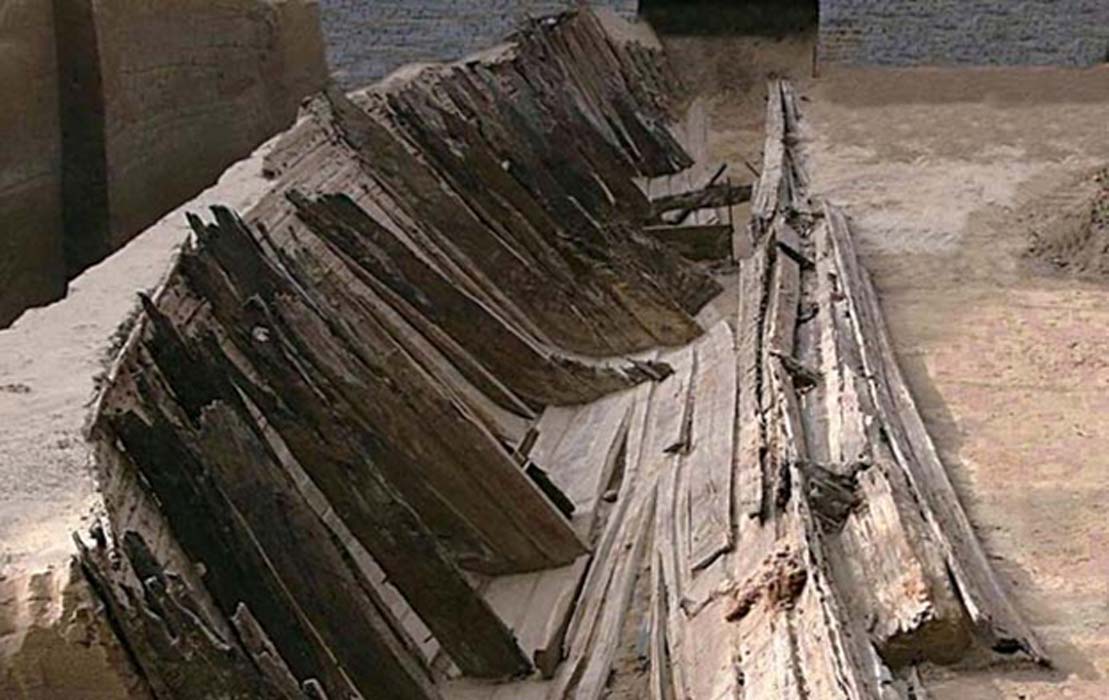700-Year-Old Shipwreck Loaded with Artifacts Discovered in China
A team of archaeologists have discovered a shipwreck in China, which had been hiding under silt and mud for more than seven centuries. Experts suggest that the new find dates back to a chronological era when the successors of Genghis Khan controlled China.
Ship Dates Back to Yuan Dynasty and Demonstrates Amazing Chinese Art
Even though China was dominated politically by the Mongols at the time, it was Chinese culture that prevailed. This is what the splendid art and artifacts discovered in the 21 meter-long (70 foot) wooden shipwreck clearly demonstrate. These include a bright-colored jar portraying a dragon and phoenix as Live Science reports.

Relics including this jar decorated with a dragon and phoenix design have been found. (Image: Chinese Cultural Relics)
Shougong Wang of the Shandong Institute of Cultural Relics and Archaeology and leader of the team of researchers that made the discovery under a , wrote in a paper published in the journal Chinese Cultural Relics that the ship was unearthed at a modern day construction site in Heze City, Shandong Province, and had a hull sectioned into twelve cabins by twelve bulkheads. He also added that the ship was probably used for river journeys.
Furthermore, the archaeologists estimate that the ship dates back to the Yuan dynasty (1271-1368), and they also noted that it held a shrine, a captain's cabin, crew quarters, cargo compartments and a control room that doubled as a kitchen.
- Breathtaking Scenery and Fascinating Traditions Connected to the Five Great Mountains of China
- Archaeologists Say They Have Unearthed A 5,000-Year-Old Graveyard of Giants in China
- Archaeologists in China find 2,800-year old tombs surrounded by 28 chariots and 98 horses

The hull of the ship was cracked, suggesting it was hit and took on water, leading to it being wrecked some 700 years ago. (Image: Chinese Cultural Relics)
Important Religious Figurines Found Inside the Ship
In the cabin that was used as a shrine, archaeologists found a religious burner and stone-carved figurines as Live Science reports. Carved out of agalmatolite stone, one of the figurines is 8.2 centimeters (about 3.2 inches) in height, and depicts a tiger sitting beside an "arhat" – an individual who in Buddhist belief has attained enlightenment. Another figurine portraying a dragon on the left side of an "arhat," was also found in the cabin. Carved out of agalmatolite stone as well, this figurine is slightly taller at 8.5 centimeters (about 3.3 inches), while the arhat is holding an alms bowl in his left hand.
“More than 100 artifacts were unearthed from both inside the shipwreck and its surrounding area, including artifacts of porcelain, pottery, lacquerware, jade, stone, iron, bronze and gold," the archaeologists wrote in the journal article.

Representative Yuan Dynasty period ewer (Public Domain)
Inside the crew quarters, the team discovered porcelain ewers (a type of jug or pitcher), net sinkers, scissors, oil lamps and bronze mirrors, the researchers mentioned, adding that lacquerware was spotted in the captain's quarters and grain remained in the cargo compartments. The archaeologists also reported that inside the control room, which also served as the kitchen, they discovered an iron stove, an iron pot, an iron ladle and a wooden cutting board. Ultimately, the team also found the ship's control system, which included a tiller positioned just above the control room on the ship's deck.
- Ancient shipwrecks, thousands of years old, may rewrite the history of South East Asia
- Shui-mu Niang-niang: The Old Mother of the Waters Who Submerged an Ancient City
- More Artifacts from a Song Dynasty Chinese Shipwreck Revealed
No Human Remains Found
“The deposits around the shipwreck and the cracking of its [hull] suggest the possibility that the ship sank after its hull was hit and the ship wrecked," the archaeologists wrote as Live Science reports. The team didn’t find any human remains inside the shipwreck, and for that reason they haven’t suggested or speculated anything about the fate of the crew. "During a relatively short period of time after the accident, the silt beneath the shipwreck was washed away by the current, [and] the shipwreck continued to sink from 1 m to 2 m [3.3 feet to 6.6 feet] below the original riverbed, then stabilized at its current location. Silt and mud were then deposited over it, and the shipwreck was completely buried," is all the team has reported so far about the shipwreck according to Live Science.
Live Science conclusively reports that the shipwreck was unearthed between October 2010 and January 2011 by archaeologists from the Shandong Provincial Institute of Cultural Relics and Archaeology and the Heze Municipal Commission for the Preservation of Ancient Monuments. A journal article with their results was published in 2016, in Chinese. It wasn’t until recently that this article was eventually translated into English and published in the journal Chinese Cultural Relics.
Top image: The hull of the ship was cracked, suggesting it was hit and took on water, leading to it being wrecked some 700 years ago. (Image: Chinese Cultural Relics)



















